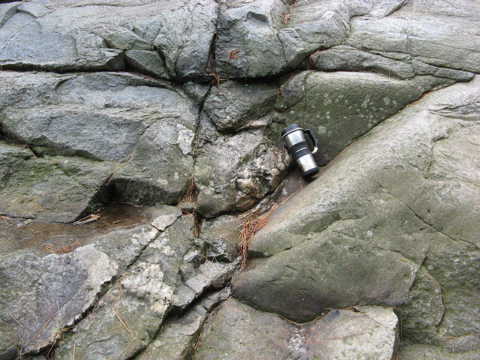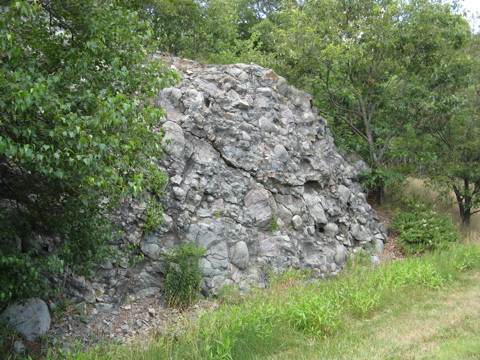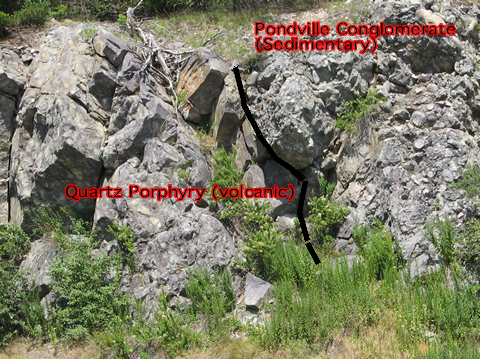The Blue Hills is an exposed region of volcanic rocks where there had been a volcano active 440 million years ago. What remains are the deep intrusive rocks, mostly granite and a type of porphyrytic rock known as the Hancock Porphyry. This could be an opportunity to discuss the different types of igneous rocks, such as granite vs. porphyry, and to help students understand that there isn't necessarily a clear distinction between rock types.
Because these rocks are more resistant to weathering than their surroundings, they remain the tallest hills around.
Blue Hills Volcano: The Blue Hills Reservation sits on top of an ancient Volcano. This volcano was active around 440 million years ago. Deep underneath the volcano was the "magma chamber", which supplied the magma. Eventually this volcano erupted and collapsed, and the magma chamber slowly cooled. This formed granite and other granite-like rocks.
Over time, the rock that lay on top of the granite eroded away, and the deep granite is now exposed in many places.
Most of the rock outside the Blue Hills area is sedimentary. Why do you think the Blue Hills remain the tallest hills around?

View from the top of the "Great Blue Hill", which is the tallest hill for miles around.
A typical rock outcropping of granite in the Blue Hills
Along the southern edge of the park (Route 93 and Route 28), you can see a bit of the younger sedimentary rock (that was deposited on top of the Quincy granite) that remains. This is an interesting rock, in that it is a conglomerate consisting of enormous boulders. This rock formation is known as the Pondville Conglomerate. In a conglomerate, rocks and sand are carried by water to a shallow waterway. There, they eventually get cemented together to form a hard rock.
The rocks in the Pondville Conglomerate are really big! What do you think the environment must have been like to move rocks of that size?
The Pondville Conglomerate formed around 300 million years ago, just as the supercontinent Pangaea came together. Boston was at the edge of a huge mountain range at that time. Why does it make sense that a rock like the Pondville Conglomerate could form here? Draw a picture showing what it might be like to visit this area at the time that the rocks that make up the Pondville Conglomerate were being eroded.
The pictures below show contact between the Pondville Conglomerate (on the right) and the volcanic rocks of the Blue Hills (on the left). The very bottom picture is a close up.






